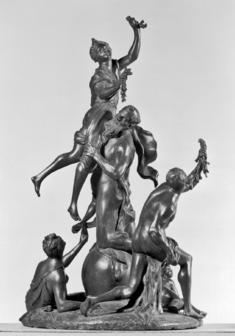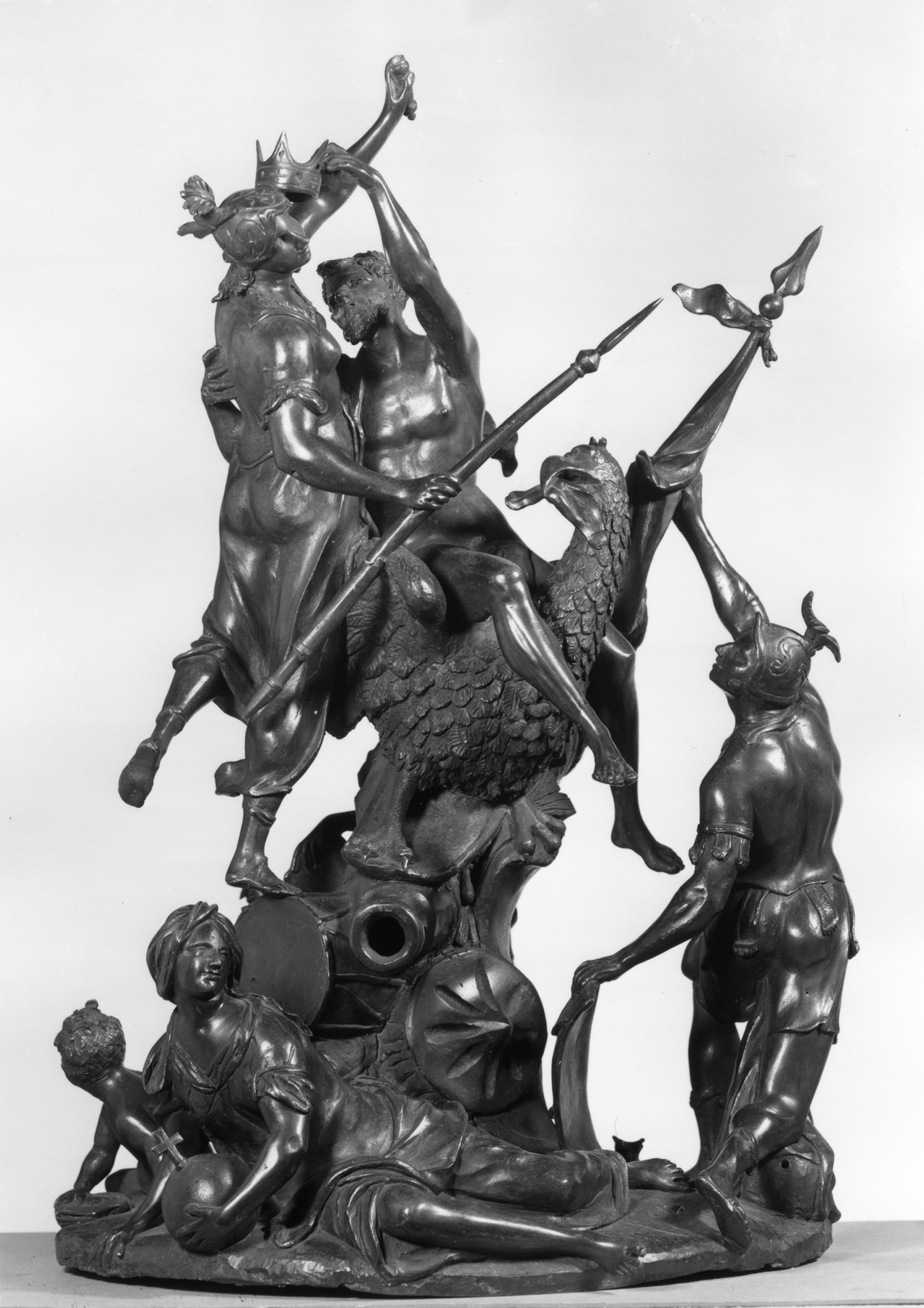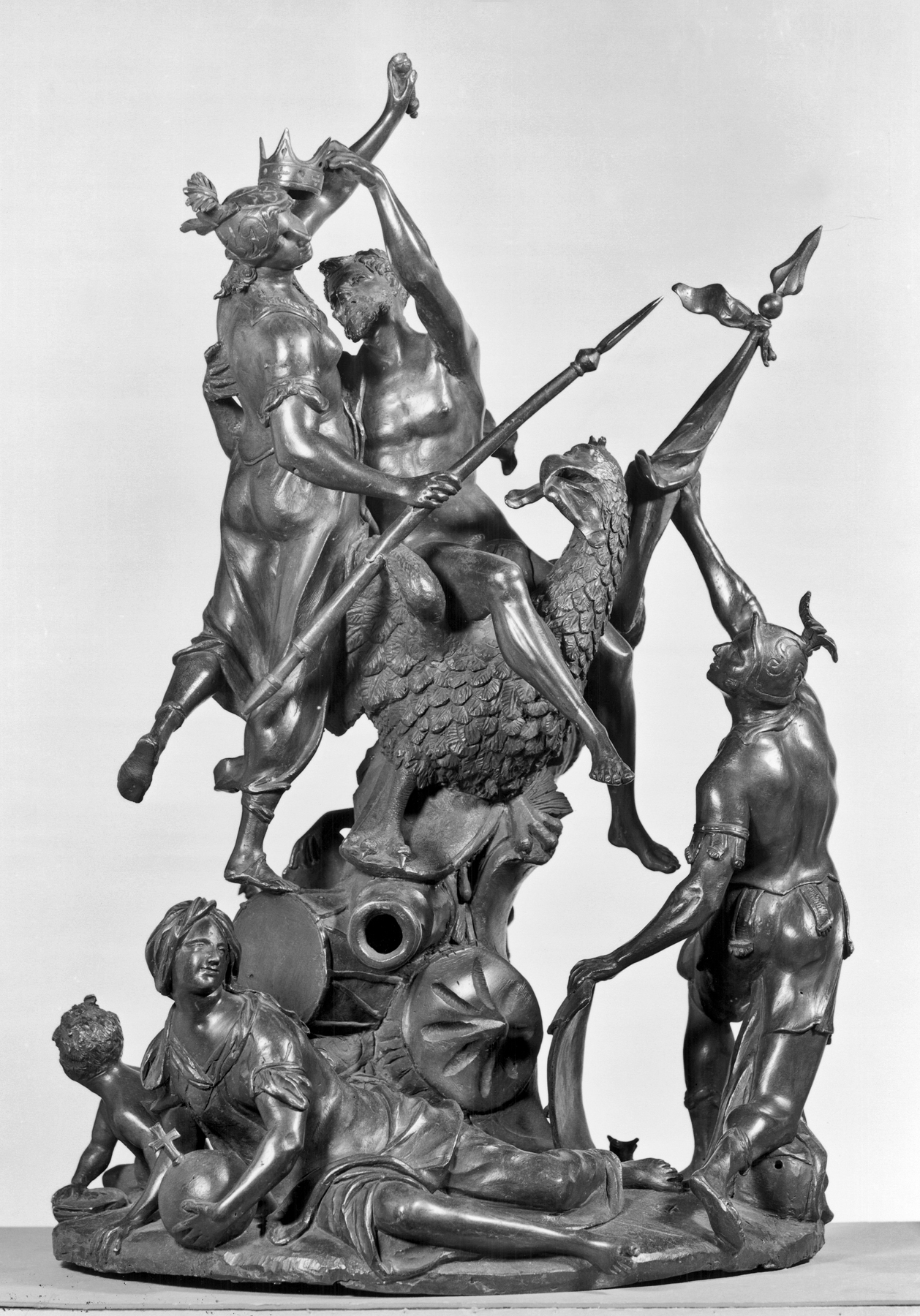Allegorical Group Representing the Four Parts of the World: Europe
(Baroque Europe )
In early modern Europe, the earth was generally understood to be divided into four parts: Europe, America, Asia, and Africa. From the 1500s to the 1800s, the symbolic depiction (“allegory”) of these four geographical areas was widely popular and often known as “The Allegory of the Four Continents.” Artists used generalized representations of men and women holding or wearing items that European viewers understood to represent the “continent” or part of the world from which they came. In this grouping the figure of Europe contrasts markedly in complexity with the others, of which the artist and his patrons knew much less.
Europe: Jupiter, the king of the gods in Greco-Roman mythology, crowns Bellona, the goddess of war. Jupiter’s eagle rests on objects used in war: canon, shield, and drum. Europe is thereby represented as being the leader of the world through her military prowess. The figure of Religion on the ground is meant to stress that the Christian faith is the foundation of Europe’s superior position.
Little is known about Francesco Bertos, a highly original artist who created a considerable number of complicated pyramidal groups in a distinctive, ingenious style that mirrors the lightness and airiness of contemporary Rococo painting in France.
Provenance
Provenance (from the French provenir, 'to come from/forth') is the chronology of the ownership, custody, or location of a historical object. Learn more about provenance at the Walters.
Spiradon, Paris [date and mode of acquisition unknown]; Jacques Seligmann & Co., Inc. Sale, New York, February 17, 1917; Henry Walters, Baltimore, 1917, by purchase; Walters Art Museum, 1931, by bequest.
Exhibitions
| 1995 | The Allure of Bronze. The Walters Art Gallery, Baltimore. |
Conservation
| Date | Description | Narrative |
|---|---|---|
| 7/15/1974 | Treatment | cleaned; examined for condition |
Geographies
Italy, Padua
(Place of Origin)
Italy, Venice (Place of Origin)
Measurements
H: 25 × W: 17 11/16 × D: 14 7/16 in. (63.5 × 45 × 36.7 cm)
Credit Line
Acquired by Henry Walters, 1917
Location in Museum
Accession Number
In libraries, galleries, museums, and archives, an accession number is a unique identifier assigned to each object in the collection.
In libraries, galleries, museums, and archives, an accession number is a unique identifier assigned to each object in the collection.
54.659
Do you have additional information?
Related Objects





